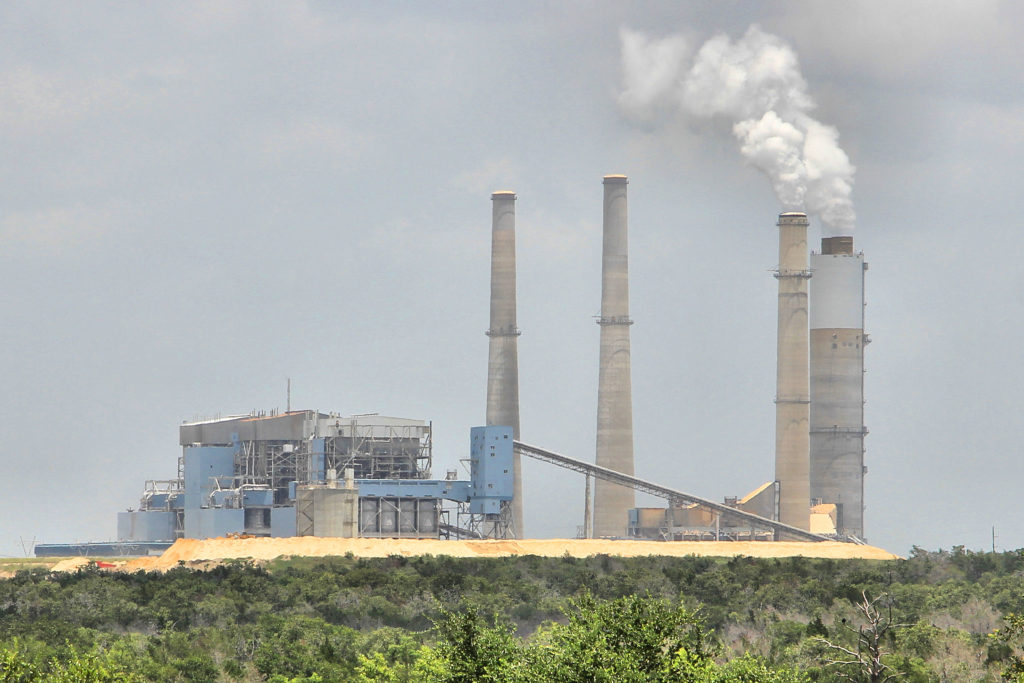by Alexandra M. Landeros
NOTE: Article originally published on AustinPost.org on July 2, 2012. Austin Post is no longer published. Version below is a shortened, edited version. Contact author for a copy of the original version.About a 75-mile drive from Austin, near La Grange, there is a coal burning plant called the Fayette Power Project, also known as the Sam Seymour Power Plant. According to a study commissioned by the Clean Air Task Force*, the health impacts per year include 37 deaths, 55 heart attacks, and 760 asthma attacks**. In 2011, Austin Energy and the Lower Colorado River Authority spent $400 million on new “scrubbers” intended to remove sulfur dioxide (associated with acid rain and respiratory illness) from the plant’s emissions. According to a June 15 press release from the LCRA*, the scrubbers remove more than 95% of sulfur dioxide. The press release was in response to a letter from the Environmental Integrity Project (EIP), announcing their intent to sue on behalf of the Texas Campaign for the Environment for various violations of the Clean Air Act.
Even though La Grange seems like a far off place to Austinites, and the environmental and health impacts of this coal-burning plant have only been studied in the immediate surroundings, we don’t know how much of this particulate matter is making its way into Austin when the wind blows in a northwesterly direction. But we do know that every time you turn on the lights or crank up the air conditioning, if you’re an Austin Energy customer, you’re drawing energy from this coal plant. Austin Energy gets about 30% of its electricity from the Fayette Power Project. Along with the Lower Colorado River Authority (LCRA), they co-own two of the three boiler units, which were completed in 1979 and 1980.

In Austin and throughout the United States, there are grassroots movements to shut down dirty coal plants and encourage cities to adopt cleaner, renewable sources of energy. The Austin Beyond Coal* campaign (a project of the Sierra Club) in collaboration with Greenpeace’s Quit Coal* campaign – acting locally as part of national campaigns – is working to get the City of Austin to “transition away from the Fayette coal plant and towards a clean energy future” through a series of media initiatives, community events, and educational outreach. They’ve made some progress, but there is still a long way to go.
In February 2011, Austin City Council approved an update to Austin Energy’s Resource, Generation and Climate Protection Plan, and in November 2011 Mayor Lee Leffingwell renewed the city’s commitment to move beyond coal*. The plan commits Austin Energy to various goals by 2020 including obtaining at least 35% of its electricity from all renewable resources, reducing reliance on the Fayette Power Project by 30%, reducing overall energy demand, and continuing further studies and discussions. Sierra Club is concerned that Austin Energy “has not made sufficient progress in planning to execute the agreed-upon studies.” Their goal is to get Austin Energy, by next spring, to meet its commitment to chart the course for implementing energy efficiency and onsite rooftop solar power, while also planning to phase out the Fayette coal plant.
It’s a long road ahead, and the benefit to Austin in transitioning to renewable energy is cleaner energy, as well as a cleaner conscience. It makes sense as city that prides itself in being green and progressive. There are various ways to get involved, such as signing the Austin Beyond Coal petition*, becoming more educated on the environmental impact of coal, and of course, there’s always finding creative ways to reduce our use of energy in the first place.
*Links to these web pages are no longer published online since the publication of this original article.
**Current statistics are available on the Clean Air Task Force website.
Leave a Reply